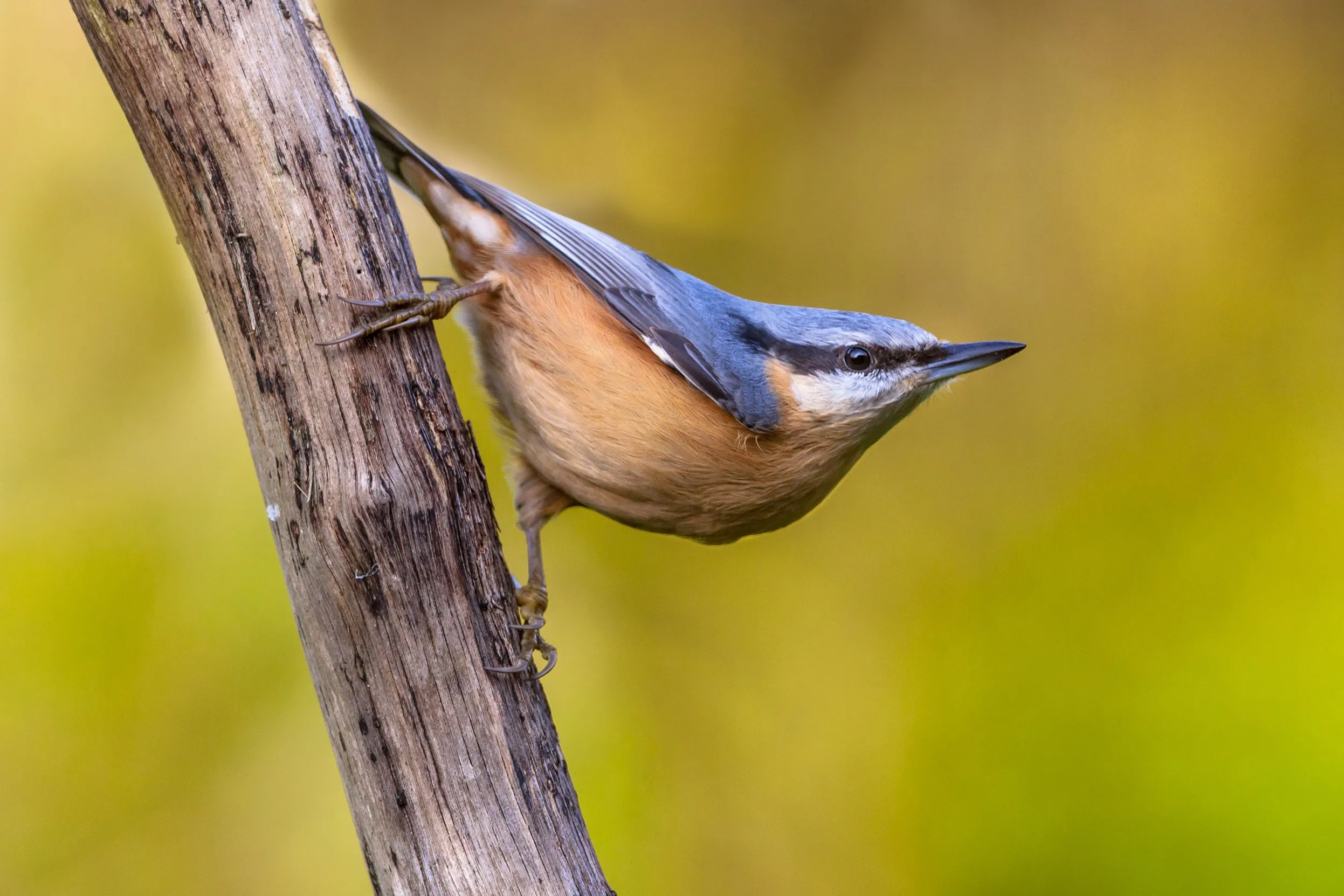
Many of our nature reserves run events, offering you a unique opportunity to see and connect with nature. This month you could try a guided wildlife walk, go batty for bats, learn all about wading birds or discover some fascinating fungi.
September marks the start of autumn and with it a season of colour and spectacle. Hedgerows ripen with berries, trees dazzle with golden leaves, and fungi erupts from the forest floor. Meanwhile, we welcome back many of our winter visitors, with wading birds in particular putting on a super show.

Head to the hedgerows in September, as they erupt into a pick-n-mix paradise of bountiful berries. This abundance of fruits is a lifeline for many of our birds as their summer food supplies, such as caterpillars and insects, run low. Look out for Blackbirds and other thrushes, as well as warblers such as Whitethroats and Blackcaps all stocking up.
Blackberry, Elderberry, Hawthorn haws, rosehips and Blackthorn sloes are all coming into season now. But it’s not just birds which are making the most of the berry bonanza. Hazel Dormice are also busy eating as much as they can to build up fat reserves before they hibernate. Pine Martens too make the most of the bounty, with a particular penchant for Rowan berries, Blackberries and Bilberries. In fact, many of our mammals, such as Hedgehogs, squirrels and Foxes all eat berries when available.

It’s not just berries which are coming into season, it’s prime acorn hunting season too. Squirrels are well known for harvesting and storing them for the winter months. But Jays do it too and autumn can be a great time to spot this usually shy and secretive bird as it comes down to the ground to gather the goods.
Watch out for a flash of pink and their famous white rump as they fly back up to the treetops when disturbed. If you don’t see them, you might hear their loud angry screech, as if you’ve annoyed them with your presence.
Despite being a pretty clever bird, Jays often forget where they’ve buried some of their stash. This means that some of the acorns are left in the ground and given the chance to grow into towering oaks. In fact, one study found that half the trees in two new English woodlands were planted by Jays.

Another bird that hoards its food is the Nuthatch. As the name suggests these birds feed on nuts and seeds. Their name is derived from the word ‘hack’, which reflects their habit of hammering or hacking at seeds and nuts that they wedge into tree bark to access the edible insides. Like Jays, Nuthatches also hoard food for the winter, pushing acorns, hazelnuts and seeds into gaps in the tree bark to save for a later date.
Look out for a small bird with a pointed peak that looks a little like a mini woodpecker. These dainty woodland-dwellers are blue-grey on top and pale orange underneath, with a bandit-like black swoosh over their eyes.
Nuthatches are found in woodlands throughout Wales, much of England and southern Scotland. As the weather turns colder and particularly into late autumn, Nuthatches are more likely to visit gardens.

Fen Raft Spiders, one of the UK’s rarest spider species, are anticipated to have their best year on record at RSPB nature reserves, thanks to conservation efforts. Back in 2010, the future looked bleak for Fen Raft Spiders, with this wetland arachnid on the brink of extinction. But concerted conservation efforts have paid off and population numbers on the Norfolk Broads are steadily increasing.
These semi-aquatic spiders are named for their ability to run across the surface of the water to catch their prey, ‘floating’ like a raft. Many people also consider them strikingly beautiful, with their distinctive white or cream stripes running along the sides of their bodies.
Although fairly shy, September is one of the best months to catch a glimpse of these stunning spiders, with RSPB Strumpshaw Fen in Norfolk one of the few places in the UK where you can see them.

From late summer, tens of thousands of wading birds fly south from their northern breeding grounds to winter in the relatively warmer UK. Among them are Knots from the Arctic. These stocky wading birds have highly specialised bills, perfect for probing mud in their hunt for tasty morsels.
Together with other waders such as Dunlins and Oystercatchers, Knots flock to our estuaries and mudflats in their thousands. The Wash, Morecambe Bay, and the Thames, Humber and Dee estuaries are great places to see them and witness one of the UK’s great nature moments, when they all take flight together.
Guy Anderson, one of the RSPB’s experts on bird migration, explains: “This is genuinely a top world class nature spectacle. The number of places you can see that many shore birds in one place together, dancing in the sky in an enormous shoal are very, very few. And we’ve got one of them right here, because of world class mud. No mud, they wouldn’t be there.”
The RSPB’s network of nature reserves are some of the best places for wildlife in UK. Revel in the seasons changing colours on a woodland walk or head to a wetland to welcome in wintering wading birds, ducks, geese and more. There are more than 170 nature reserves for you to visit across the UK, with RSPB members enjoying free entry and parking.

Many of our nature reserves run events, offering you a unique opportunity to see and connect with nature. This month you could try a guided wildlife walk, go batty for bats, learn all about wading birds or discover some fascinating fungi.